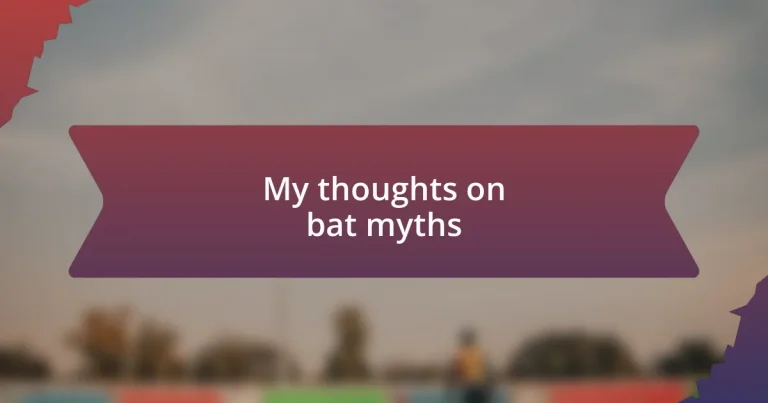Key takeaways:
- Bats are not blind; many species have good eyesight and rely on echolocation for navigation.
- Only a few bat species are bloodsuckers, with the majority being insectivores that help control pest populations.
- Despite associations with disease, the risk of transmission from bats to humans is low, and they play essential ecological roles.
- Community engagement and education can enhance bat conservation efforts and promote understanding of their importance.
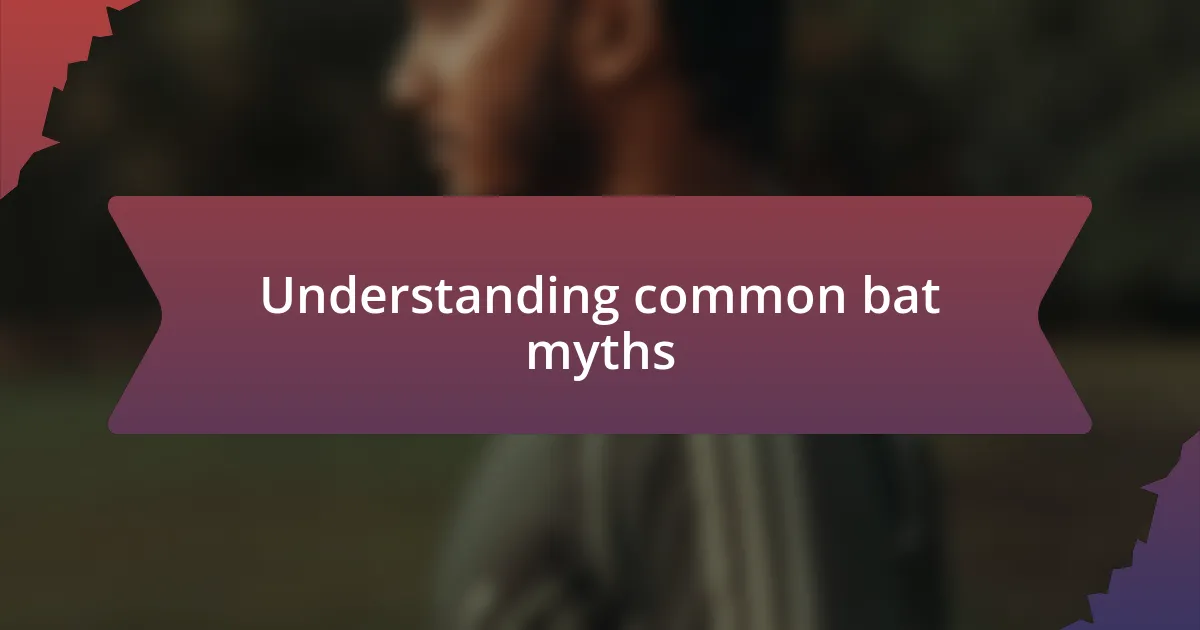
Understanding common bat myths
One common myth I often hear is that bats are blind. This misconception may stem from their habit of navigating in the dark, but it’s simply not true. In fact, many bat species have good eyesight, especially in low-light conditions, which surprises people when they learn that.
Another prevalent myth is that all bats are rabid, which can instill unnecessary fear. While rabies can be a concern, the reality is that only a small percentage of bats carry this disease. I remember once sharing this fact at a community event and many were relieved to hear it; fear often arises from misunderstanding.
Lastly, people often think that bats will swoop down and attack them. This couldn’t be further from the truth. Bats are generally skittish and prefer to avoid humans. I’ve had so many nighttime encounters while camping, where bats simply flit about, leaving me in awe rather than fear. What does it say about our relationship with nature when myths can overshadow the beauty and innocence of these creatures?
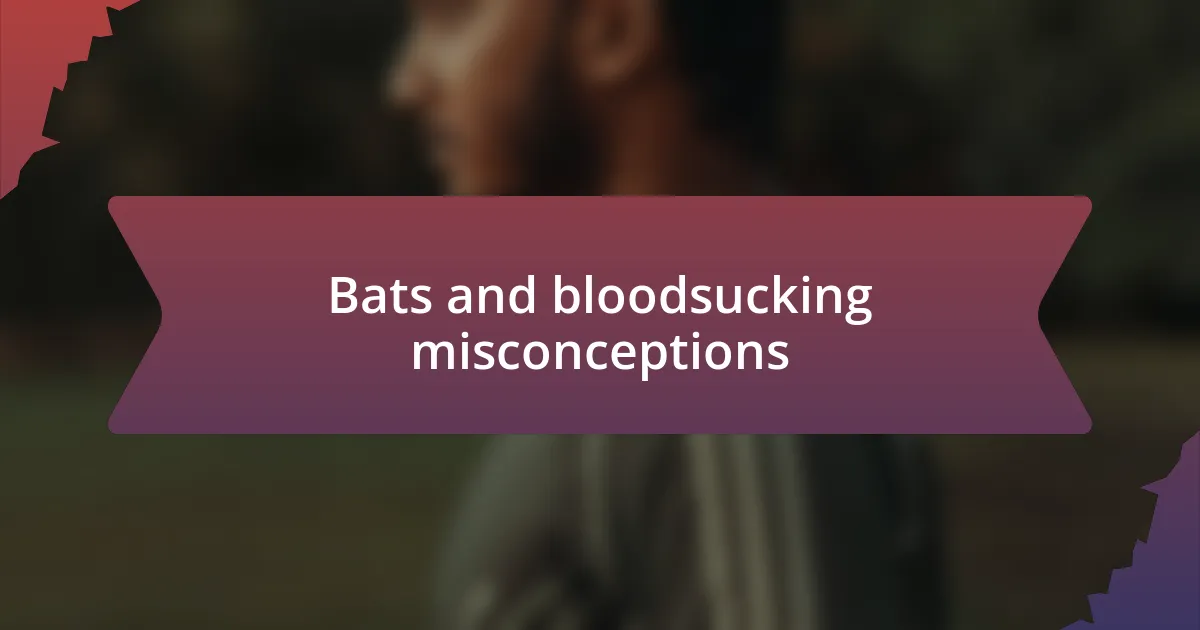
Bats and bloodsucking misconceptions
Misconceptions about bats and bloodsucking often stem from their portrayal in popular culture. One widespread belief is that all bats are vampires. However, only a few species, like the infamous vampire bat, actually feed on blood, primarily from livestock. I recall a night at a wildlife sanctuary when I first learned about these creatures. It was eye-opening to discover that the vast majority of bats are insectivores, helping to control pest populations naturally.
Another myth is that bloodsucking bats pose a significant threat to humans. While vampire bats do exist, their feeding habits are typically harmless. They make small incisions in the skin of larger animals and consume tiny amounts of blood without causing serious harm. I once watched a fascinating documentary that explored this behavior, dispelling my earlier fears and showcasing the adaptability of these species. It made me appreciate the balance nature provides, rather than viewing these bats as menacing figures.
Lastly, the idea that bats will pursue humans for blood is completely unfounded. These creatures are more interested in their natural prey than in humans. During my encounters with bats, they’ve never shown any signs of aggression towards me. Instead, I’ve felt a sense of camaraderie with them as they gracefully navigate through the night skies, reminding me of the importance of respecting wildlife.
| Myth | Reality |
|---|---|
| All bats are vampires | Only a few species feed on blood; most eat insects |
| Bloodsucking bats threaten humans | Vampire bats feed on livestock and pose little threat |
| Bats pursue humans for blood | Bats are more focused on insects than humans |
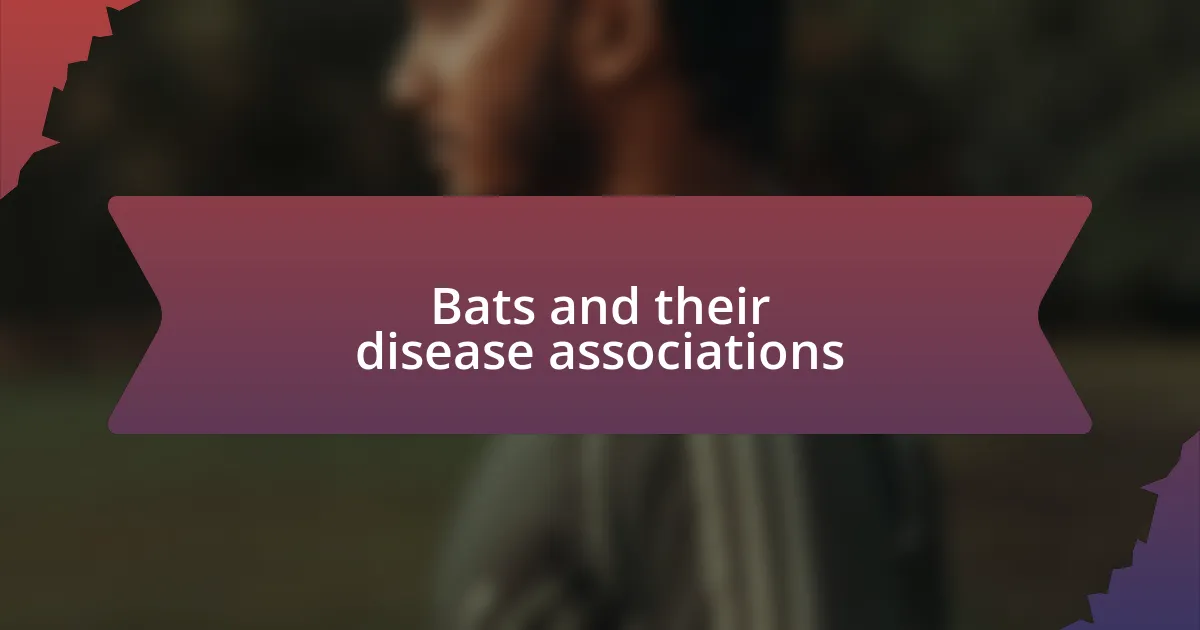
Bats and their disease associations
Bats are often associated with various diseases, and it’s crucial to unpack these associations. While it’s true that bats can be hosts for certain pathogens, it’s important to understand that much of the fear surrounding bats comes from misunderstandings. I remember feeling uneasy when I first learned about their role in spreading diseases like rabies, but I’ve come to appreciate that the risk to humans is considerably low. For example, most bats avoid humans, and rabies transmission is rare and usually occurs through direct contact.
Here are some key points to consider:
- Bats are reservoirs for viruses like rabies, but transmission to humans isn’t common.
- Bat habitats are essential for maintaining ecological balance, as they contribute to insect control and pollination.
- Most species are not aggressive and pose minimal risk to human health when left undisturbed.
Encountering bats in nature can be a serene experience, like a touch of magic in the dusk as they flit through the air. I often find solace in their presence, realizing that their contribution to our ecosystems far outweighs the exaggerated fears surrounding their disease associations.
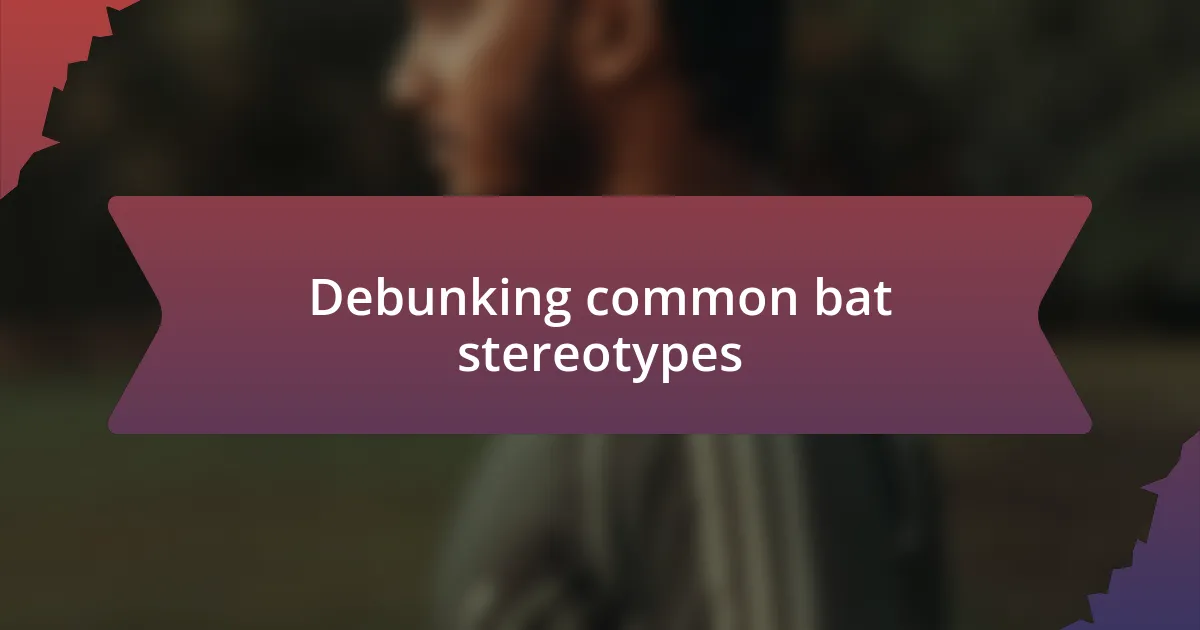
Debunking common bat stereotypes
When it comes to bats, one of the most pervasive stereotypes is that they are bloodsucking monsters. I remember a time when I watched a horror movie featuring bats that left me feeling frightened and uncertain. However, in reality, only a handful of bat species consume blood, and most feed on insects or nectar. This misconception paints bats in an unfair light, overshadowing their vital role as natural pest controllers.
Another common stereotype is that bats are dirty creatures. I’ve often heard people express disgust at the mere thought of bats roosting nearby. Yet, I’ve observed that they are surprisingly clean animals, often grooming themselves like cats. In fact, their guano, or bat droppings, is rich in nutrients and can be a valuable fertilizer. Isn’t it interesting how a little knowledge can transform our perception?
Additionally, many people believe that bats are blind, which is quite the opposite of the truth. I chuckle when I hear this because I can still remember the awe I felt during a nighttime hike, watching bats swooping gracefully around, clearly able to navigate their environment. These remarkable creatures use echolocation to find their way and hunt for food, showcasing an incredible adaptation rather than a deficiency. So, the next time you hear someone mention these myths, perhaps you could share a little of what you now know?
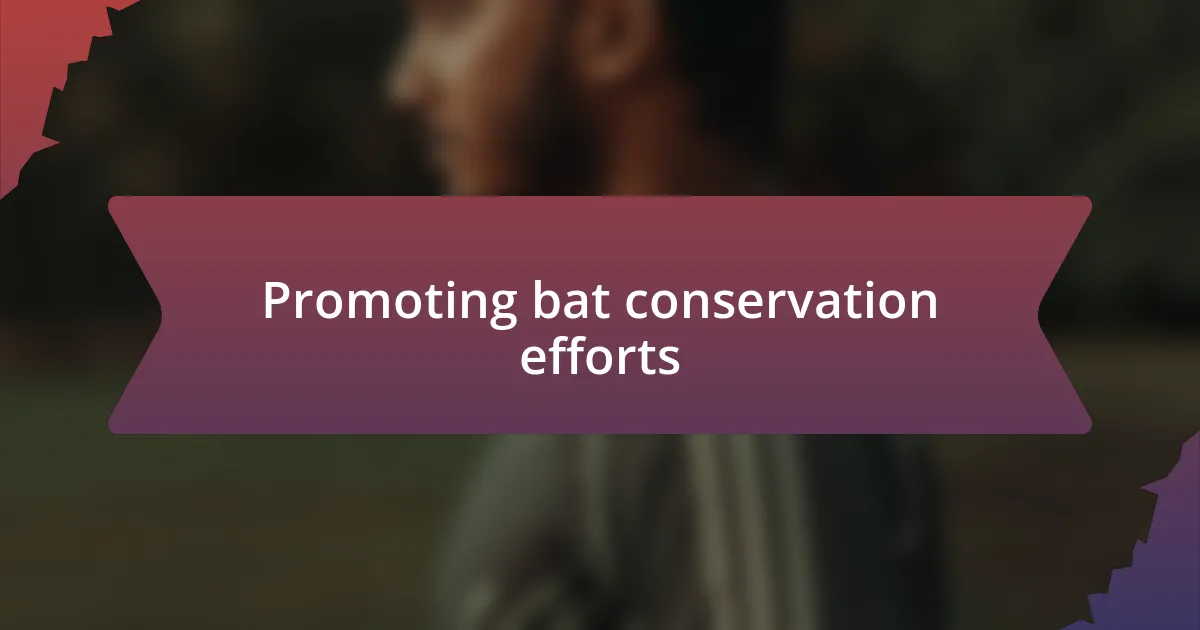
Promoting bat conservation efforts
Promoting bat conservation must be a priority, especially when we consider their incredible contributions to ecosystems. I vividly recall an evening watching bats flit about at dusk, their presence transforming an ordinary night into a magical experience. Isn’t it fascinating to think about how they help control insect populations, reducing the need for chemical pesticides that can harm our environment?
One effective approach to conservation is community engagement. I remember participating in a local bat count organized by a wildlife group, which opened my eyes to the joy of witnessing these creatures up close. Events like these not only educate people about bats but also foster a sense of stewardship. When communities come together to appreciate and protect these animals, it creates a powerful collective impact.
Lastly, partnerships with local schools can spread awareness about bat conservation from a young age. I’ve seen firsthand how children become passionate advocates for wildlife after learning about bats in a fun, interactive setting. Imagine the ripple effect of nurturing a generation that understands the importance of bats and feels empowered to protect them!
